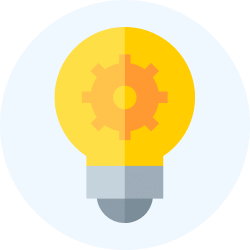Electrical Engineering (EE) Exam > Electrical Engineering (EE) Videos > Digital Electronics > What is a CMOS ?
What is a CMOS ? Video Lecture | Digital Electronics - Electrical Engineering (EE)
FAQs on What is a CMOS ? Video Lecture - Digital Electronics - Electrical Engineering (EE)
| 1. What is a CMOS? |  |
Ans. CMOS stands for Complementary Metal-Oxide-Semiconductor. It is a technology used in the fabrication of integrated circuits, particularly for microprocessors, memory chips, and other digital logic circuits. CMOS technology is known for its low power consumption and high noise immunity, making it widely used in electronic devices.
| 2. How does CMOS work? |  |
Ans. CMOS technology utilizes both p-type and n-type metal-oxide-semiconductor field-effect transistors (MOSFETs) to create digital circuits. The complementary nature of these transistors allows for low power consumption as they consume power only when switching. The p-type MOSFETs use holes as charge carriers, while the n-type MOSFETs use electrons. By combining these transistors, CMOS technology enables the creation of complex digital circuits.
| 3. What are the advantages of CMOS technology? |  |
Ans. CMOS technology offers several advantages. Firstly, it has low power consumption due to the minimal power dissipation when transistors are not switching. Secondly, CMOS circuits have high noise immunity, making them less susceptible to external interference. Thirdly, CMOS chips are highly scalable, allowing for the integration of a large number of transistors in a small space. Lastly, CMOS technology allows for high-speed operation and is compatible with various fabrication processes.
| 4. Where is CMOS technology used? |  |
Ans. CMOS technology is used in a wide range of electronic devices, including microprocessors, memory chips, digital cameras, smartphones, tablets, and many other digital logic circuits. It is also employed in analog circuits, data converters, and sensors. The versatility and efficiency of CMOS technology make it a popular choice in the semiconductor industry.
| 5. How does CMOS differ from other semiconductor technologies? |  |
Ans. CMOS technology differs from other semiconductor technologies, such as TTL (Transistor-Transistor Logic) or NMOS (N-type Metal-Oxide-Semiconductor), in a few key aspects. CMOS consumes less power compared to TTL and NMOS designs. Additionally, CMOS circuits have higher noise immunity, allowing for better operation in noisy environments. Furthermore, CMOS technology offers higher packing density and scalability, which makes it suitable for complex integrated circuits.
Related Searches




















